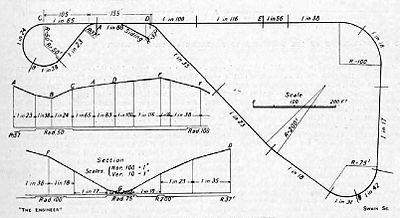
A bogie is a chassis or framework that carries a wheelset, attached to a vehicle—a modular subassembly of wheels and axles. Bogies take various forms in various modes of transport. A bogie may remain normally attached or be quickly detachable. It may include a suspension component within it, or be solid and in turn be suspended ; it may be mounted on a swivel, as traditionally on a railway carriage or locomotive, additionally jointed and sprung, or held in place by other means.

Mason Bogie locomotives are a type of articulated tank locomotive suited for sharp curves and uneven track, once commonly used on narrow-gauge railways in the United States. The design is a development of the Single Fairlie locomotive.

The use of a third rail in rail transport modelling is a technique that was once applied, in order to facilitate easier wiring.

Under the Whyte notation for the classification of steam locomotives, 4-2-0 represents the wheel arrangement of four leading wheels on two axles, two powered driving wheels on one axle and no trailing wheels. This type of locomotive is often called a Jervis type, the name of the original designer.
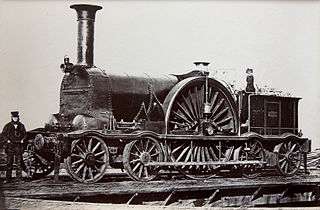
Under the Whyte notation for the classification of steam locomotives, 4-2-4 represents the wheel arrangement of four leading wheels on two axles, two powered driving wheels on one axle, and four trailing wheels on two axles.
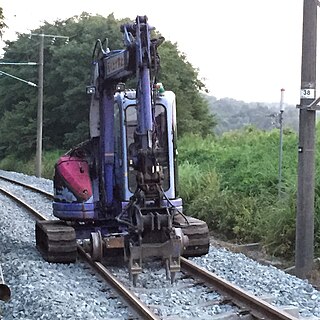
A road–rail vehicle or a rail–road vehicle is a dual-mode vehicle which can operate both on rail tracks and roads. They are also known as two-way vehicles, hi-rail, and rail and road vehicles.

A variable gauge system allows railway vehicles in a train to travel across a break of gauge between two railway networks with different track gauges. For through operation, a train must be equipped with special bogies holding variable gauge wheelsets which contain a variable gauge axle (VGA).

The Dean Single, 3031 Class, or Achilles Class was a type of steam locomotive built by the British Great Western Railway between 1891 and 1899. They were designed by William Dean for passenger work. The first 30 members of the class were built as 2-2-2s of the 3001 Class.

The South African Railways Class NG15 2-8-2 is a class of narrow-gauge steam locomotives.
Under the Whyte notation for the classification of steam locomotives by wheel arrangement, a 4-8-2+2-8-4 is a Garratt articulated locomotive consisting of a pair of 4-8-2 engine units back to back, with the boiler and cab suspended between them. The 4-8-2 wheel arrangement has four leading wheels on two axles, usually in a leading bogie, eight powered and coupled driving wheels on four axles and two trailing wheels on one axle, usually in a trailing truck. Since the 4-8-2 type is generally known as a Mountain, the corresponding Garratt type is usually known as a Double Mountain.

The South African Railways Class 24 2-8-4 of 1949 is a steam locomotive.

The South African Railways Class 21 2-10-4 of 1937 was a class of steam locomotives used in South Africa.
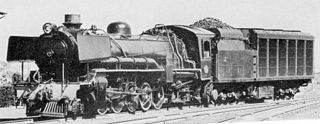
The South African Railways Class 20 2-10-2 of 1935 was a steam locomotive.

The South African Railways Class 18 2-10-2 of 1927 was a steam locomotive.

The South African Railways Class 16E 4-6-2 of 1935 is a class of passenger steam locomotive.

The South African Railways Class 14C 4-8-2 of 1922 was a steam locomotive.

The South African Railways Class NG6 4-4-0 of 1895 was an ex-Mozambican narrow-gauge steam locomotive from the Beira Railway era.
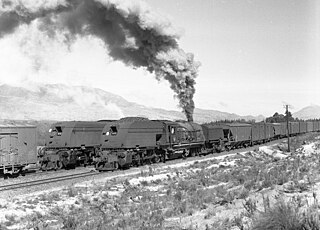
The South African Railways Class GEA 4-8-2+2-8-4 of 1946 was an articulated steam locomotive.

The South African type FT tender was a steam locomotive tender.

Eighteen South Australian Railways K class (broad-gauge) locomotives were built by Beyer, Peacock and Company for the South Australian Railways (SAR) between 1878 and 1884. Despite having a fundamental design flaw that affected their original role as light-line passenger locomotives, they eventually performed shunting duties exclusively. They operated for six decades.

